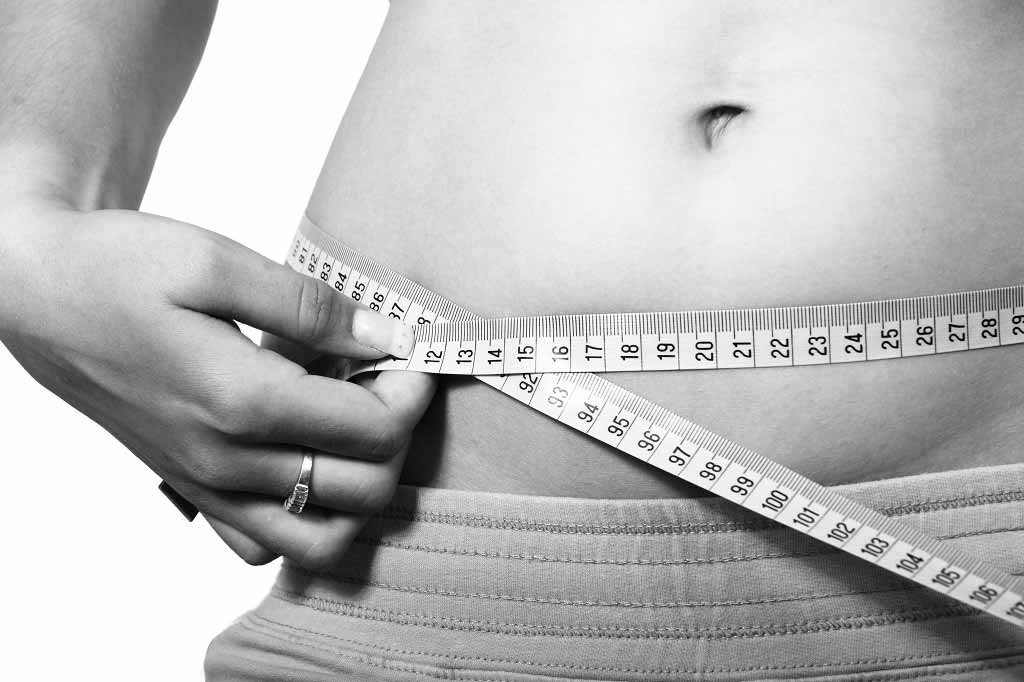Double chins banished with 'fatburner injections'?
Obesity
'Say goodbye to double chins with a new ‘fat-eater’ treatment that doesn’t need surgery' is the encouraging news in the Daily Mail. A smallish study found that a so-called fatburner injection, ATX-101, achieved significant results …
"Say goodbye to double chins with a new ‘fat-eater’ treatment that doesn’t need surgery", is the encouraging news in the Daily Mail. A well-conducted study found that a so-called ‘fatburner injection’, ATX-101, achieved significant results compared with a placebo (dummy treatment). The study involved the injection of a new treatment to treat excess fat under the chin.
The treatment, called ATX-101, works by breaking down fat cells. The trial is reported to be the first to look at a non-invasive treatment for a double chin, rather than liposuction (where fat is surgically removed from the body) or a ‘face lift’ (the surgical removal of excess fat and skin).
In the study, 363 people were randomised to receive up to four treatments of ATX-101 injections (each consisted of two doses), or placebo injections over 12 weeks. Both doses of ATX-101 significantly improved excess fat under the chin compared with the placebo, as judged by both the doctors and patients. The fact that neither group knew which treatment was being given helps to make sure that these results were not due to them expecting there to be a response to the new treatment.
Over 90% of people receiving ATX-101 experienced some side effects. These were mostly mild and went away with time but one-quarter and one-third of people reported moderate or severe injection-related pain with ATX-101. Also 13% withdrew from further ATX-101 treatment sessions due to side effects.
Before this treatment could be used in practice, it will need to be approved by the European drug regulator.
Where did the story come from?
The study was carried out by researchers from research institutions in Manchester and Plymouth in the UK; in Berlin, Germany and California in the US, It was funded by Bayer HealthCare, AG and Kythera Biopharmaceuticals, Inc.
Some of the authors were working for, had worked for or acted as advisors for the funders. Kythera Biopharmaceuticals developed ATX-101. This represents a potential conflicts of interest that were made clear in the study.
The study was published in the peer-reviewed British Journal of Dermatology.
The Daily Mail reporting of the study is over-positive. While the results were encouraging, it made no mention about the side effects or the high drop-out rate of 13% due to such effects.
The treatment is not yet available and it is not known if it will gain a license for wider use.
However, due to its potential commercial applications it may be expected that the manufacturers would seek licensing approval at some point in the future, particularly if future studies give positive results.
What kind of research was this?
This was a phase III randomised controlled trial designed to look at the safety and effectiveness of an injectable treatment for the excess fat under the chin.
Unwanted excess fat under the chin, or a double chin, is a common problem, and one which the researchers say is considered aesthetically unappealing. However, currently, invasive treatments of liposuction or a face lift are the only options.
This research examines a new treatment called ATX-101 (a synthetic version of deoxycholic acid). This chemical disrupts the membrane of fat cells causing the fat cells to break down.
This double blind randomised trial compared an injection of ATX-101 with an injection of an inactive placebo solution. This is the ideal study design to see whether ATX-101 is effective and safe compared with injection of an inactive solution.
The double blind design ensures that neither patient nor doctor were aware of which treatment had been given. This should remove any risk of bias from either person expecting there to be more of an effect when they knew the active treatment had been given (the placebo effect).
What did the research involve?
This research involved 363 adults (three-quarters of whom were women) with an average age of 46, who were recruited from 28 centres in Belgium, France, Germany, Spain and the UK. All participants had moderate to severe fat under the chin (called submental fat, or SMF) rated as grade 2 or 3 on the 5-point Clinician-Reported Submental Fat Rating Scale (CR-SMFRS). The participants had also expressed dissatisfaction with the appearance of the fat under their chin (Subject Self-Rating Scale [SSRS] score 0–3).
People who had received previous treatments for fat under the chin were excluded, as were those with a body mass index (BMI) above 30kg/m2 (which would be considered obese) and those undergoing weight loss programmes. Participants were required to maintain a stable weight, diet and exercise during the study.
Participants were then randomised to three groups:
- ATX-101 injections at a lower dose of 1mg per cm2 of skin area being treated (120 people)
- ATX-101 injections at a higher dose of 2mg per cm2 (121 people)
- Placebo injections (122 people)
Injections were given into the fat under the chin on up to four separate treatment sessions, spaced 28 days apart. The study lasted 12 weeks.
The main (primary) outcomes of interest were:
- the number of responders, defined as the number of patients with an improvement of 1 point or more in SMF on the 5-point Clinician-Reported Submental Fat Rating Scale (CR-SMFRS) – an objective measurement
- the number of patients satisfied with their face and chin appearance on the Subject Self-Rating Scale (SSRS) – a subjective measurement
Other outcomes of interest included skin laxity (looseness), excess fat as measured by calipers, adverse effects and other patient-reported outcomes.
What were the basic results?
All but one of the 363 participants received at least one treatment session.
At 12 weeks, significantly more participants in both ATX-101 dose groups had responded to treatment and were satisfied with their appearance:
- proportion of responders: 59.2% with the 1mg dose, 65.3% with the 2mg dose, and 23.0% with placebo
- patients satisfied with their face/chin appearance: 53.3% with the 1mg dose, 66.1% with the 2mg dose, and 28.7% with placebo
The treatment also improved the amount of excess chin fat as measured by calliper, and there was no worsening in skin looseness.
Adverse effects were experienced by most of the participants receiving ATX-101 (90% and 95% at the two respective doses) and half of participants in the placebo group.
The side effects that were more common in the treatment groups than placebo groups were those commonly associated with injections, such as:
- injection-site pain
- swelling
- numbness
- bruising
- redness
- indenting of the skin
All of these went away (resolved) in the 28 days between treatments.
Although most adverse effects were described to be mild - injection pain was an exception. It was reported to be moderate in around one-third of participants receiving ATX-101 treatment (only 10% with placebo). A quarter of participants receiving the ATX-101 treatment thought injection pain was severe (less than 1% with placebo). A total of 19 people in the ATX-101 groups withdrew from further treatment due to adverse effects (13%) compared to only one in the placebo group (less than 1%).
How did the researchers interpret the results?
The researchers conclude that ATX-101 was an effective and well-tolerated non-surgical treatment for excess fat under the chin.
Conclusion
This was a well-conducted, randomised controlled trial that examined the effectiveness and safety of an injected treatment (ATX-101) for excess fat under the chin compared with an inactive placebo injection. This is described to be one of the first trials of a non-surgical treatment for reducing fat under the chin.
The study benefits from its reasonably large sample size, inclusion of doctor and patient measures of treatment effect, and its double blind design.
The study found significant improvements with ATX-101 according to both clinician and patient-ratings. However, there are some cautions to bear in mind:
- Side effects, though for the most part mild and transient, were very common in the treatment group. Injection-related pain in particular was rated to be moderate to severe by between one-quarter and one-third of people receiving treatment. Also 13% withdrew from further treatment sessions due to side effects. Therefore, though a non-invasive treatment, some people did not find the side effects tolerable.
- Also related to the double blind design, the ATX-101 was associated with more side effects than placebo, so it is possible that some doctors or patients may have guessed that they were receiving an active treatment.
- The study has looked at the effects of up to four treatments given over a 12-week period. It would be useful to know the effects in the longer term, and whether they were maintained or whether further treatments were needed.
- The study also placed certain restrictions on participants, including that their BMI was not above 30kg/m2, that they maintained a steady diet and weight and had not tried previous treatments for a double chin. Therefore the effects may not apply if people do not fulfil these criteria, for example would it be an effective treatment for people who were clinically obese and/or were unable to maintain a steady weight?
- The study does not tell us how results would compare to currently available surgical procedures to treat a double chin. If such a trial was carried out, it would not be possible to blind the trial as obviously all participants and clinicians would have to be aware of whether an injected treatment or an invasive procedure were going to be performed.
Overall, the results of this trial seem to suggest an effect but it must be remembered that this treatment is not yet available. Further study is needed, and it is not possible to say at the current time whether this treatment will gain the licensing approval needed for it to be marketed for use more widely.
The industries behind weight loss and cosmetic enhancements are, on a global scale, worth multi-billions so it may be expected that the manufacturers would seek licensing approval at some point, particularly if future trials also demonstrate the treatment to be safe and effective.






 Subscribe
Subscribe Ask the doctor
Ask the doctor Rate this article
Rate this article Find products
Find products





